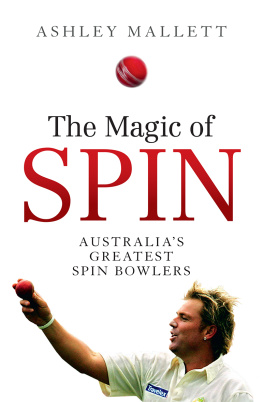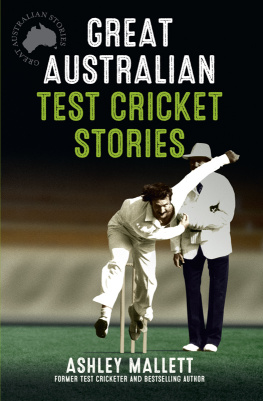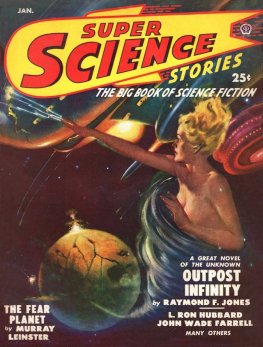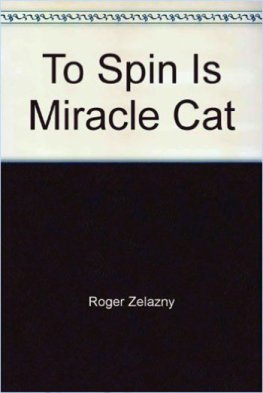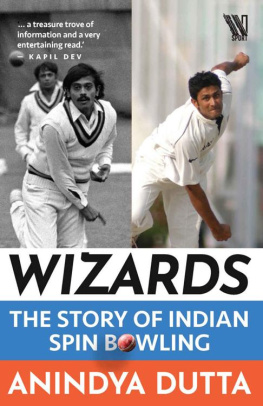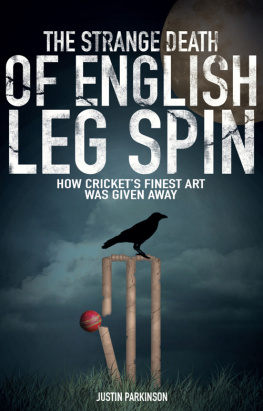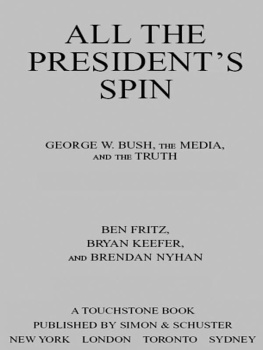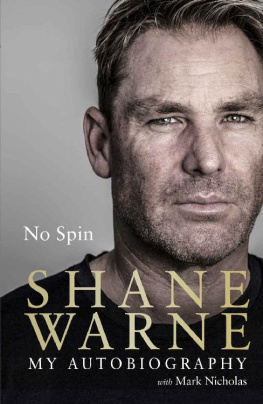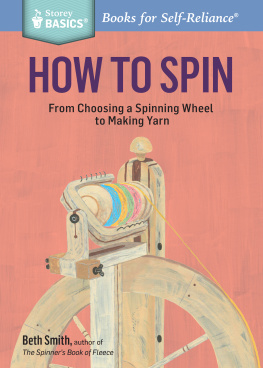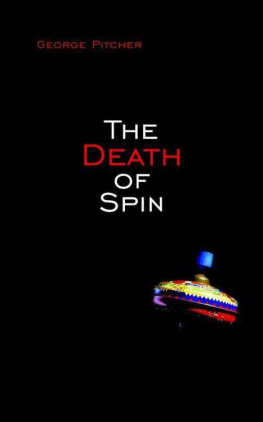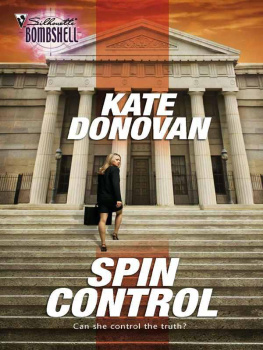Also by Ashley Mallett
Autobiography
Rowdy
Spin Out
Biography
Trumper: The Illustrated Biography
Clarrie Grimmett: The Bradman of Spin
Chappelli Speaks Out
One of a Kind: The Doug Walters Story
Nugget Man of the Century
Scarlet: Clarrie Grimmett Test cricketer
Thommo Speaks Out
No Beating About the Bush
The Diggers Doctor
Historical
The Black Lords of Summer
The Catch that Broke a Bank
Great Australian Test Cricket Stories
General non-fiction
One Hundred Cricket Tips
In Bradmans Band
Eleven: The Greatest Eleven of the 20th Century
The Boys from St Francis
Childrens
Master cricketer series: Allan Border; The Chappell Brothers;
Dennis Lillee; Don Bradman; Doug Walters; Geoff Lawson;
Kim Hughes; Rodney Marsh
Master footballer series: Mark Williams; Tim Watson; Robert Flower;
Wayne Johnston
Master soccer player series: John Kosmina
Master tennis player series: Evonne Cawley
This book is dedicated to my wife, Patsy Mary Mallett, the love of my life.
CONTENTS
Ashley Rowdy Mallett was a fine off-spinner tall but with the ability to make the ball dip from a point above the batsmans eye line and then turn when it landed, Mallett was blessed with the big heart so necessary to become a successful tweaker at international level. If you want a clue as to how good Mallett was as a spinner, he reached 100 Test wickets bowling less balls than it took Shane Warne to achieve that landmark.
I was fortunate enough to captain Mallett both at state and Test level, and he was a valued teammate both on and off the field. Of the many positive traits that Mallett possessed as a spin bowler, there was one that stood out: the better the batsman, the better he bowled.
When Greg Chappell first moved to Queensland, he came in to face Mallett on an Adelaide Oval pitch that was receptive to spin. Quite uncharacteristically Chappell lofted a few shots to the boundary in the first over. Malletts next four overs to Chappell all resulted in maidens from hard-spun off-breaks that tested all the batsmans faculties.
After play I was having a beer with Chappell and I asked, You didnt think I was going to do something stupid out there, did you?
I was hoping, he responded.
When I asked him how good those next four overs were, he just rolled his eyes and replied, As good as Ive faced.
Since retiring Mallett has been a prolific writer, employing his knowledge of the game and the characters who played it and spicing his work with his quirky sense of humour.
His humour, along with his renowned clumsiness, were endearing traits that made him an entertaining teammate. Whether he was doing a limp fall in the middle of a crowded room or spinning yarns about his employment ranging from film producer to stockbroker at the interminable cocktail parties in the UK, there was never a dull moment when Mallett was about. To add colour to his yarns about his various jobs, he employed a full range of English accents from plum in the mouth posh to within the sound of Bow Bells Cockney with great effect.
Consequently, its always been a pleasure to read Malletts writing on spinners, and Ive particularly enjoyed his insights on the ever-active mind of Clarrie The Fox Grimmett and the ferociously competitive attitude of his bowling partner Bill Tiger OReilly.
I experienced firsthand his dedication to writing when he published a well-researched book on me that I thought admirably captured my personality.
Having enjoyed many years playing and touring alongside Mallett, Im now pleased to read his observations on the difficult art of spin bowling. No one is better qualified to write about the magic of spin through the decades than Ashley Mallett.
He spins the ball so hard that it sings and it hums
the batsmans bemused all fingers and thumbs
It arrives in a curve, like the flight of an arrow
The Magic of Spin brings the boy to the barrow
Laras bat and his pad is now slightly astray
the ball finds the gap and he leaves in dismay.
Bowled through the gate by a ball we are told,
Warnes leg break a thing to behold.
Would Bradman have tamed the genius of turn?
O bring on the challenge, the memory does burn.
Warney releases a ball of great danger
and Bradman spars at the fizzing stranger.
The ball fairly buzzes, an ace and a trump.
It pitches leg perfect and hits the off stump!
Ashley Mallett
Richie Benaud, like his hero Keith Miller, epitomised the daring of cricket. Benaud was a cricketing hero to me and my mates growing up in Sydney in the early to mid 1950s. We slapped on Brylcreem as though it was going out of fashion as a tribute to our cricket hero, much the same as other youngsters of the time tried to develop a kiss curl la Bill Haley.
From the time we got home from school my elder brother, Nick, and I would get stuck into a game of cricket in our Chatswood backyard in suburban Sydney. The inevitable backyard Tests were a joy as we emulated our heroes. I never got to emulate Benaud, however, for he was in the Australian team and I was instructed by Nick that I had to be England. But whenever Nick was not at home and I was left to my own devices, I would try to bowl like Benaud. The only concession from Nick was to allow me to have Victor Trumper as one of the England openers. Nick kept score in an old exercise book: every ball, every run to the batsman and runs taken off each bowler.
One of our rules was that you had to bowl in the same style as the bowler at the crease, so when the England captain Len Hutton called Jim Laker to the crease, I bowled off spin. It was Laker who inspired me to take up the art a few years later, in 1956, when he took 19 of Australias 20 wickets on a treacherous turner at Old Trafford. I never lost my fascination with the magic of leg spin practising to bowl leggies gave me a great insight into how difficult the art is. You could roll the ball out and land in a good area, but to be any good, I instinctively knew the bowler had to really give the ball a tweak. Thats where practice came in: lots of it, to achieve consistency of line and the ability to build pressure on the batsman.
With every big match Benaud became more consistent, attaining the line and length needed to apply pressure to the batsmen, with his combination of leg breaks, top-spinners, wronguns and flippers. What we didnt know at the time was just how hard Benaud worked on all parts of his game.
As a young man he worked as a journalist, and his working hours allowed him to get to the Sydney Cricket Ground long before the other players arrived for the state squad training. Benaud took advantage by grabbing a bag of balls and heading for the nets at the SCG No 2 Ground. There he would place a handkerchief on a good length and bowl for hours to hit his target, ball after ball after ball. He bowled mainly stock-leg breaks, each with lots of over spin, but at varying paces. Subtle variation it had to be, for only subtle changes in pace can lead to the spinner breaking the rhythm of the batsman. The rhythm of his approach and drive through the crease was paramount, for a spinner must also develop a repeatable action.
Just like the youngsters who half a century later saw Shane Warne in action, the youngsters of my time had every little Benaud idiosyncrasy down pat: one step forward, then five lengthy paces towards the bowling crease, the shirt unbuttoned to the waist, hair slicked down, the pursed lips and thoughtful stare at the batsman after each ball. His bowling was all rhythm and energy. He paradoxically combined a cultivated style with a bold, almost carefree, quest to attack at all costs. Benaud was always turned out immaculately, not a hair out of place, his shirt unbuttoned to reveal a bronzed chest. Every inch a warrior-cricketer, he was always up for the contest. We loved it.

